In today’s car market, crossovers have taken over with a vengeance. They’re everywhere—tall, bulbous, practical machines designed to appeal to as many people as possible.
And to be fair, they check a lot of boxes: decent fuel efficiency, higher seating positions, respectable cargo space, and a perception of safety and capability.
It’s no surprise, then, that the SUV and crossover boom has swallowed up entire segments of sedans and hatchbacks. But in the shadow of that dominance lies a niche segment of vehicles that refuses to go quietly: the station wagon.
The wagon, often seen as the automotive equivalent of dad jeans or avocado-colored kitchen appliances, has long battled its outdated reputation.
Yet in recent years, certain automakers have flipped the script. No longer just family haulers, wagons have been reinvented as performance machines, design icons, and enthusiast favorites.
From sleek, muscular long-roof rockets like the Audi RS6 Avant to the hybrid-hot Volvo V60 Polestar Engineered, wagons today can rival—and in many cases, outshine—crossovers in driving engagement, sophistication, and even versatility.
These are the wagons that make you look twice, that force you to reconsider what a practical daily driver can be.
Still, not all wagons are created equal. For every RS6 or Panamera Sport Turismo, there’s a forgotten, uninspired model that fails to excite even the most pragmatic of drivers.
These are the wagons that cling to mediocrity, built not to thrill but simply to exist—boxes on wheels, designed without spirit or innovation.
These models often prove that without vision, a wagon can be every bit as dull (or duller) than the average economy crossover. The key difference? While a boring crossover can still sell based on image and utility, a boring wagon has very few legs to stand on.
This article breaks down the current wagon landscape by dividing it into two sides. First, we’ll celebrate five wagons that are more fun than most crossovers on the road—vehicles that not only embrace their form factor but elevate it to something worth getting excited about. These aren’t just good wagons; they’re great cars, period.
Then we’ll explore the other side of the spectrum—five wagons that miss the mark entirely, proving that without innovation or excitement, long roofs can quickly become long yawns. These models highlight why many buyers flock to crossovers in the first place.
Whether you’re a die-hard wagon lover, a skeptical crossover owner, or just someone intrigued by how cars balance performance with practicality, this list is meant to entertain and inform.
Wagons may no longer dominate sales charts, but the best of them prove that driving fun doesn’t require an SUV badge—or extra ground clearance.
And the worst? Well, they serve as cautionary tales of what happens when a good format is poorly executed. So buckle up—this is the long-roof breakdown you didn’t know you needed.
Also Read: 10 Cars With Rearview Mirrors That Are Too Small by Today’s Standards
5 Wagons That Are More Fun Than Crossovers
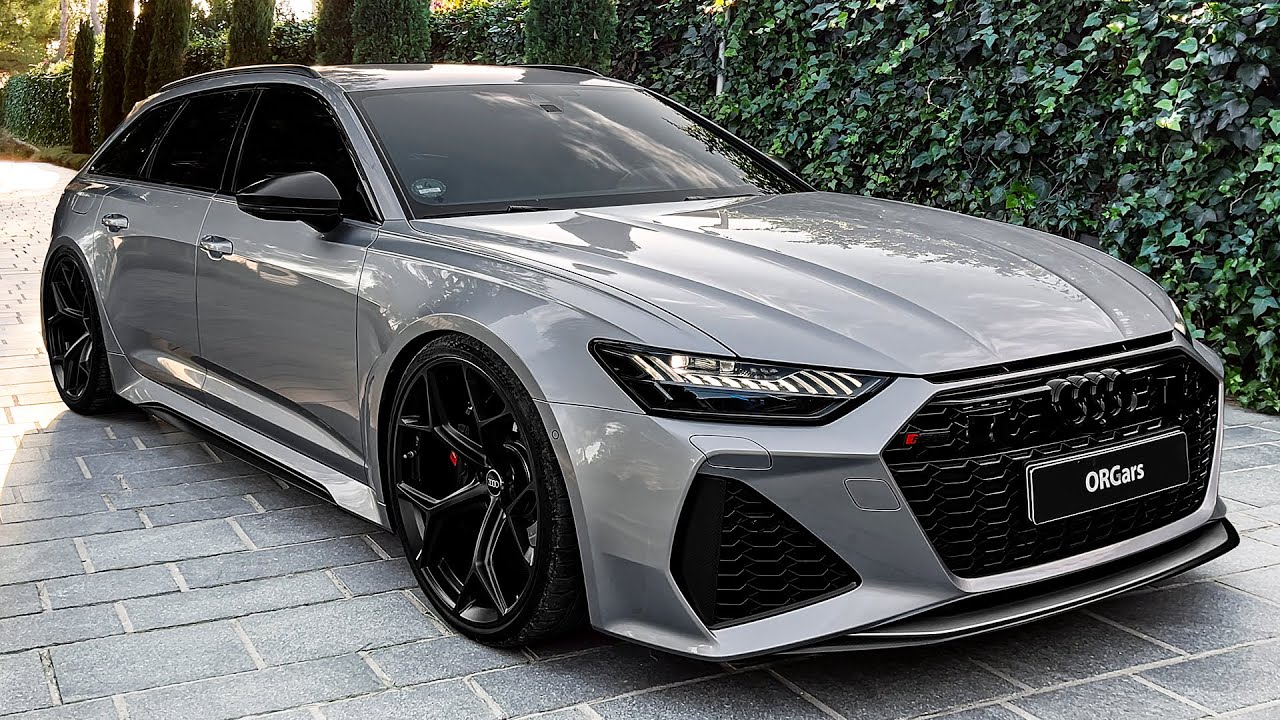
1. Audi RS6 Avant
The Audi RS6 Avant is a rolling contradiction—in the best possible way. It’s a high-performance weapon disguised as a family-friendly estate, and that contradiction is exactly what makes it more thrilling than the vast majority of crossovers.
With a 4.0-liter twin-turbocharged V8 producing around 591 horsepower and 590 lb-ft of torque, this car rockets from 0 to 60 in just about 3.5 seconds.
Audi’s Quattro all-wheel-drive system ensures all that power gets to the pavement efficiently, and the result is a car that feels planted and brutally quick in almost any condition.
The RS6 isn’t just fast in a straight line, either—it’s been engineered to handle like a much smaller, sportier car, thanks to features like dynamic all-wheel steering, adaptive air suspension, and a sport rear differential.
The design of the RS6 Avant does an excellent job of reflecting its dual-purpose nature. It’s wide, low, and muscular, with flared fenders and aggressive bumpers that scream performance, yet it never crosses the line into flashiness.
You could show up to a corporate meeting in it without raising eyebrows, and then take it to the track on the weekend.
The interior matches that philosophy: luxury materials like Valcona leather, carbon fiber inlays, and brushed aluminum dominate the cabin, while a sophisticated infotainment setup with dual touchscreens keeps things feeling modern and intuitive.
You sit low, surrounded by tech and comfort, but you’re constantly reminded that this is a serious machine, not just a cushy cruiser.
What truly sets the RS6 Avant apart from nearly every crossover on the road is the emotional connection it delivers.
Crossovers, even sporty ones, tend to be somewhat anesthetized in their driving dynamics—they’re competent but rarely exciting. The RS6, by contrast, feels alive.
There’s a weight to the steering, a tension in the chassis, and a responsiveness in the drivetrain that few SUVs, even performance ones, can replicate.
You don’t just drive this car; you engage with it. For driving enthusiasts who still need space for family and gear, the RS6 Avant is not just a better choice than a crossover—it’s the ideal one.
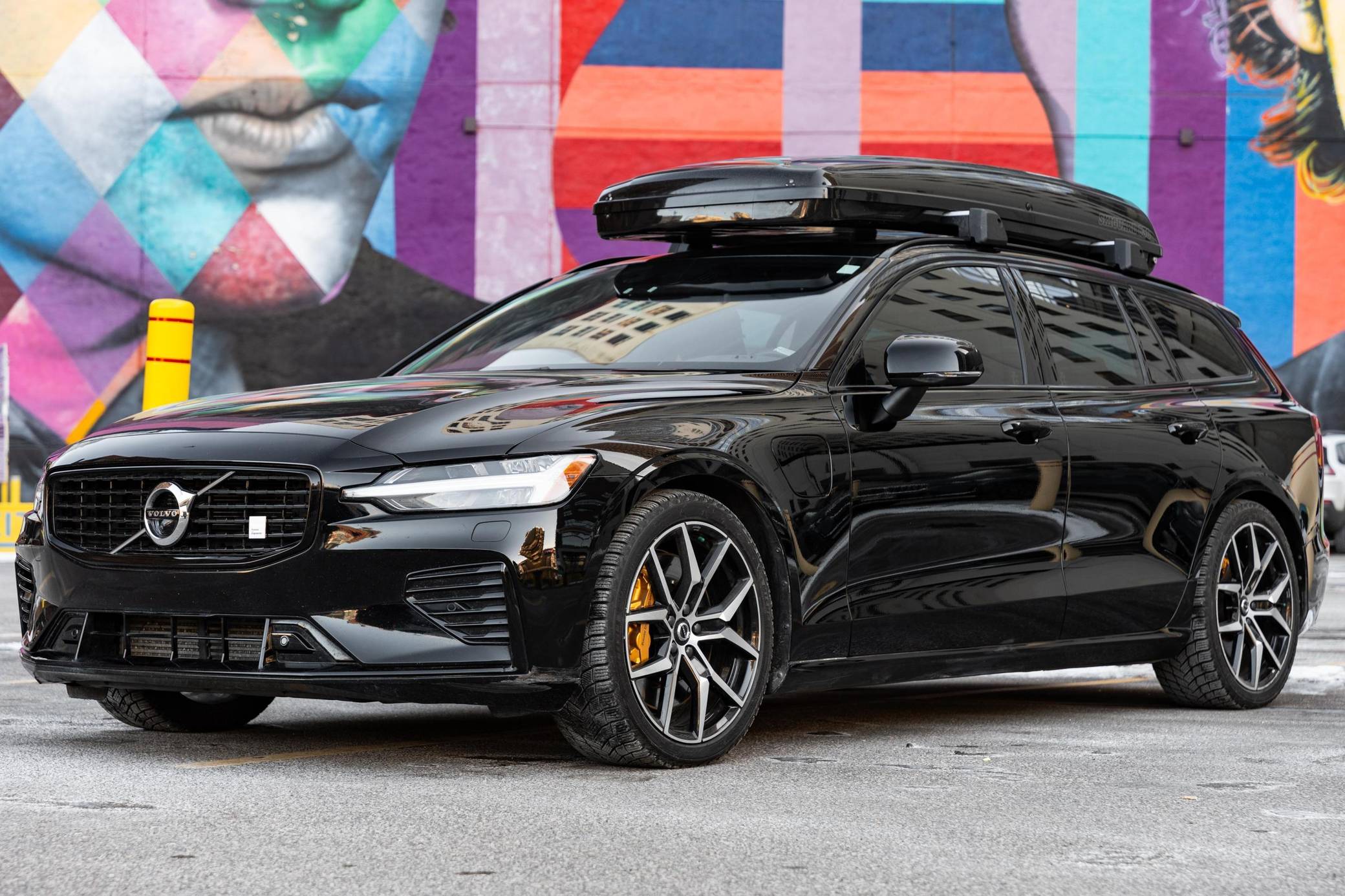
2. Volvo V60 Polestar Engineered
The Volvo V60 Polestar Engineered is a revelation to anyone who still associates Volvos with safety-first blandness. Sure, safety is still baked into its DNA, but the Polestar division has taken that calm, sensible platform and infused it with an impressive dose of attitude.
Under the hood is a turbocharged and supercharged 2.0-liter four-cylinder hybrid system that produces over 400 horsepower.
This might sound modest compared to V8 rivals, but in practice, the V60 PE feels nimble, responsive, and surprisingly quick.
The instant torque from the electric motor fills in low-end power gaps, making city driving and highway overtakes smooth and effortless. Combine that with a tight 8-speed automatic transmission and standard all-wheel drive, and you’ve got a wagon that feels more alive than most crossovers ever will.
What elevates the V60 PE beyond its powertrain is its incredibly sophisticated chassis and suspension setup. The ride quality is firm but not punishing, tuned to deliver exceptional feedback without sacrificing comfort.
Öhlins manually adjustable dampers are included—a true rarity in this segment—which allow enthusiasts to fine-tune ride and handling to their preferences.
Cornering is crisp and neutral, and the Brembo brakes provide the kind of stopping power usually found in sports sedans. This wagon doesn’t try to mimic an SUV—it simply outperforms them where it matters: on the road.
While most crossovers are optimized for ride height and interior space, the V60 PE is optimized for driver satisfaction.
Then there’s the design. Scandinavian minimalism dominates the interior, which is both refreshing and modern.
Clean lines, intuitive controls, and high-quality materials give the V60 a premium atmosphere, while its digital interfaces are responsive and logically organized. On the outside, the subtle Polestar badging, blacked-out trim, and unique wheels hint at its performance potential without shouting about it.
It’s the car you buy if you want to fly under the radar while still having the ability to blow the doors off most compact SUVs.
Compared to the bloated, often clumsy dynamics of even luxury crossovers, the V60 PE feels like a precision instrument—one that’s as enjoyable on twisty roads as it is in everyday traffic.

3. Mercedes-AMG E63 S Wagon
The Mercedes-AMG E63 S Wagon doesn’t just beat crossovers—it completely obliterates them when it comes to performance and engagement.
At the heart of this long-roof missile is a handcrafted 4.0-liter twin-turbocharged V8 pushing out 603 horsepower and 627 lb-ft of torque.
That’s enough to take this family-sized wagon from 0 to 60 mph in under 3.4 seconds, which is faster than many dedicated sports cars.
But power is just part of the equation. Mercedes-AMG has engineered this car with active suspension, dynamic engine mounts, rear-biased 4MATIC+ all-wheel drive, and even a “Drift Mode” that disconnects the front axle entirely for rear-wheel-drive antics. It’s outrageous, excessive, and completely irresistible to anyone who enjoys the act of driving.
What’s more impressive than the raw numbers is how seamlessly the E63 S Wagon balances luxury and performance.
One moment, it’s a serene cruiser with one of the smoothest ride qualities in the segment. Next, it’s attacking hairpin turns with precision and agility that defy its size and weight.
The steering is direct and communicative, the throttle sharp and responsive, and the transmission seems to read your mind, always in the right gear whether you’re cruising or carving up a canyon.
No crossover on the market can deliver this duality. Even high-performance SUVs from Porsche or BMW don’t match the E63’s cohesiveness or raw personality.
Inside, the E63 S Wagon is a masterclass in modern luxury. The cabin is swathed in Nappa leather, carbon fiber, and brushed aluminum. The MBUX infotainment system is slick and intuitive, with dual high-resolution screens for instrumentation and controls.
You get massaging seats, ambient lighting, and enough room for five adults plus cargo, all while piloting what amounts to a full-blown supercar in disguise.
Crossovers might offer elevated seating positions and all-weather capability, but few can offer this level of engagement and sophistication in a single package. The E63 S Wagon isn’t just better than a crossover—it’s in a different league entirely.
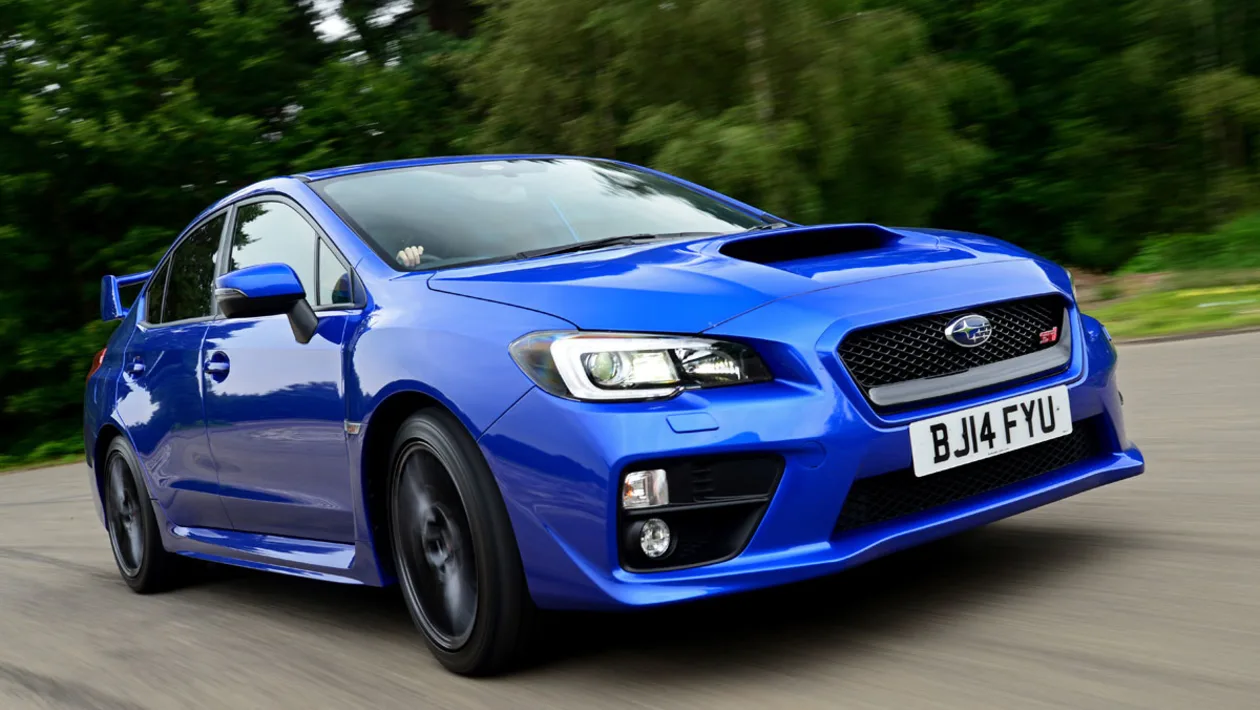
4. Subaru WRX Wagon (Levorg)
The Subaru WRX Wagon, known as the Levorg in international markets, is the spiritual successor to the rally-bred machines that made Subaru a household name among car enthusiasts.
While it doesn’t boast the massive horsepower figures of its German rivals, the WRX Wagon makes up for it in raw, honest driving pleasure.
With a turbocharged flat-four engine under the hood, the WRX Wagon delivers punchy performance with a growl that hints at its rally heritage.
Paired with Subaru’s symmetrical all-wheel-drive system, the wagon feels planted and surefooted in almost any condition—rain, snow, gravel, or tarmac. This is a car that encourages you to find the long way home, especially if it includes a winding road or two.
One of the WRX Wagon’s most appealing traits is its balance between fun and function. You can fit all your gear in the back, pack friends or family in comfortably, and still have a car that feels agile and quick on its feet.
The suspension setup is firmer than most mainstream wagons, delivering sharp turn-in and minimal body roll, yet it doesn’t sacrifice ride comfort the way some performance cars do.
Unlike many crossovers, which feel top-heavy and disconnected, the WRX Wagon keeps you low to the ground and in touch with the road. That’s a key differentiator—this car is built to engage with the driver, not isolate them from the driving experience.
Aesthetically, the WRX Wagon is restrained but purposeful. Its design is more functional than flashy, with subtle fender flares, a low-slung profile, and a no-nonsense interior that prioritizes usability.
Some may find the cabin a bit spartan compared to luxury alternatives, but enthusiasts will appreciate the focus on essentials: supportive seats, clear gauges, and tactile controls.
It’s not about being fancy—it’s about being effective. In a world full of crossovers trying to be everything to everyone, the WRX Wagon stands out by being something very specific: a car that loves to be driven.
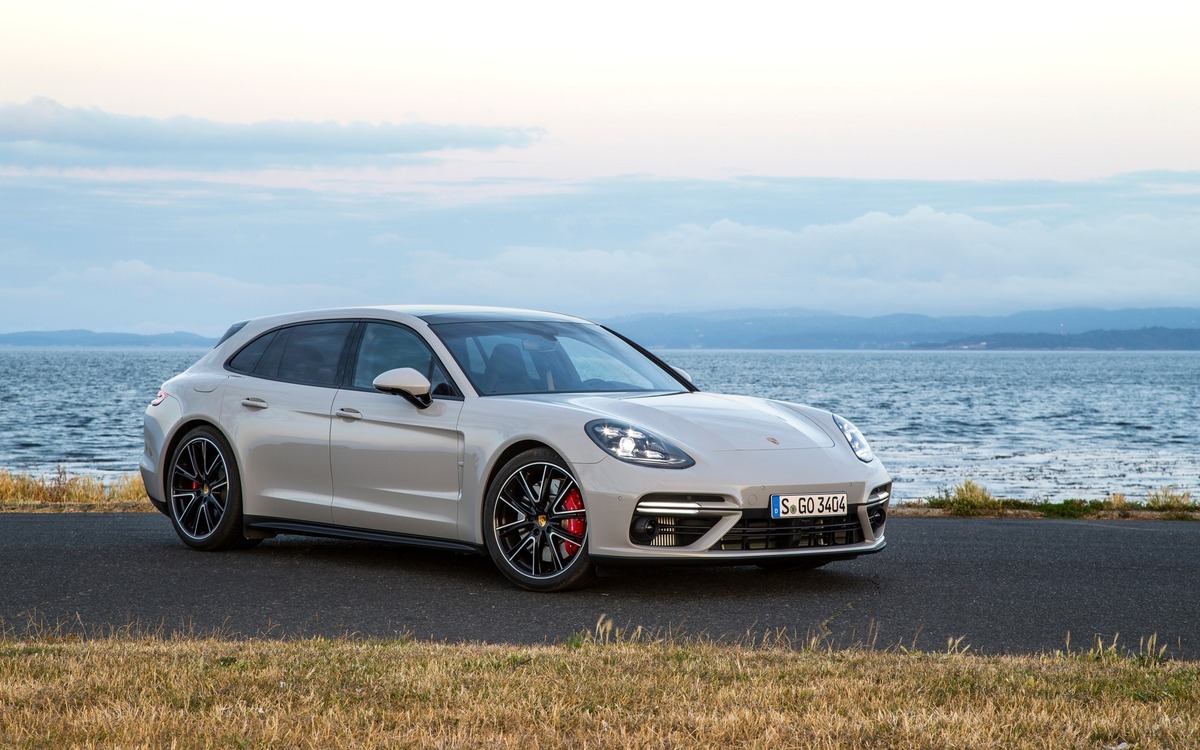
5. Porsche Panamera Sport Turismo
The Porsche Panamera Sport Turismo is what happens when one of the most respected sports car brands decides to make a wagon that doesn’t compromise.
With a range of engine options—from a turbocharged V6 to the ferocious Turbo S E-Hybrid producing nearly 700 horsepower—there’s a version of the Panamera ST for everyone, from luxury seekers to outright speed junkies.
Regardless of trim, the driving dynamics are unmistakably Porsche. It’s precise, communicative, and almost telepathic in its responses, delivering the kind of engagement you’d expect from a 911 but with the practicality of a long-roof vehicle.
This isn’t just a fast car—it’s a refined, track-capable machine that happens to have room for dogs and luggage.
The chassis tuning is perhaps the most underrated part of the Panamera experience. Porsche’s adaptive air suspension, available rear-axle steering, and torque vectoring system work in harmony to deliver an incredibly balanced and composed ride.
Whether you’re cruising on the highway or pushing through switchbacks, the Sport Turismo remains composed and confidence-inspiring.
Unlike most crossovers, which prioritize soft comfort and upright visibility, the Panamera focuses on performance and control. You feel the road through the steering wheel.
You sense the weight shift through corners. You’re connected, in a way most crossovers simply cannot replicate due to their height and mass.
Inside, the Panamera ST is a lesson in luxury meets technology. Porsche’s build quality is legendary, and that reputation holds true here. High-grade leather, precision metalwork, and a beautifully integrated infotainment system make the cabin a luxurious cocoon.
You’ll find room for four adults and a large cargo area in the back—more than enough for real-world practicality. And despite its high price tag, the Panamera Sport Turismo feels worth every penny, especially for those who value driving as an experience.
Compared to the numb, lifted ride of most high-end crossovers, this wagon offers true gran turismo flair—performance, poise, and presence in equal measure.
5 Wagons That Are Boring Compared to Crossovers
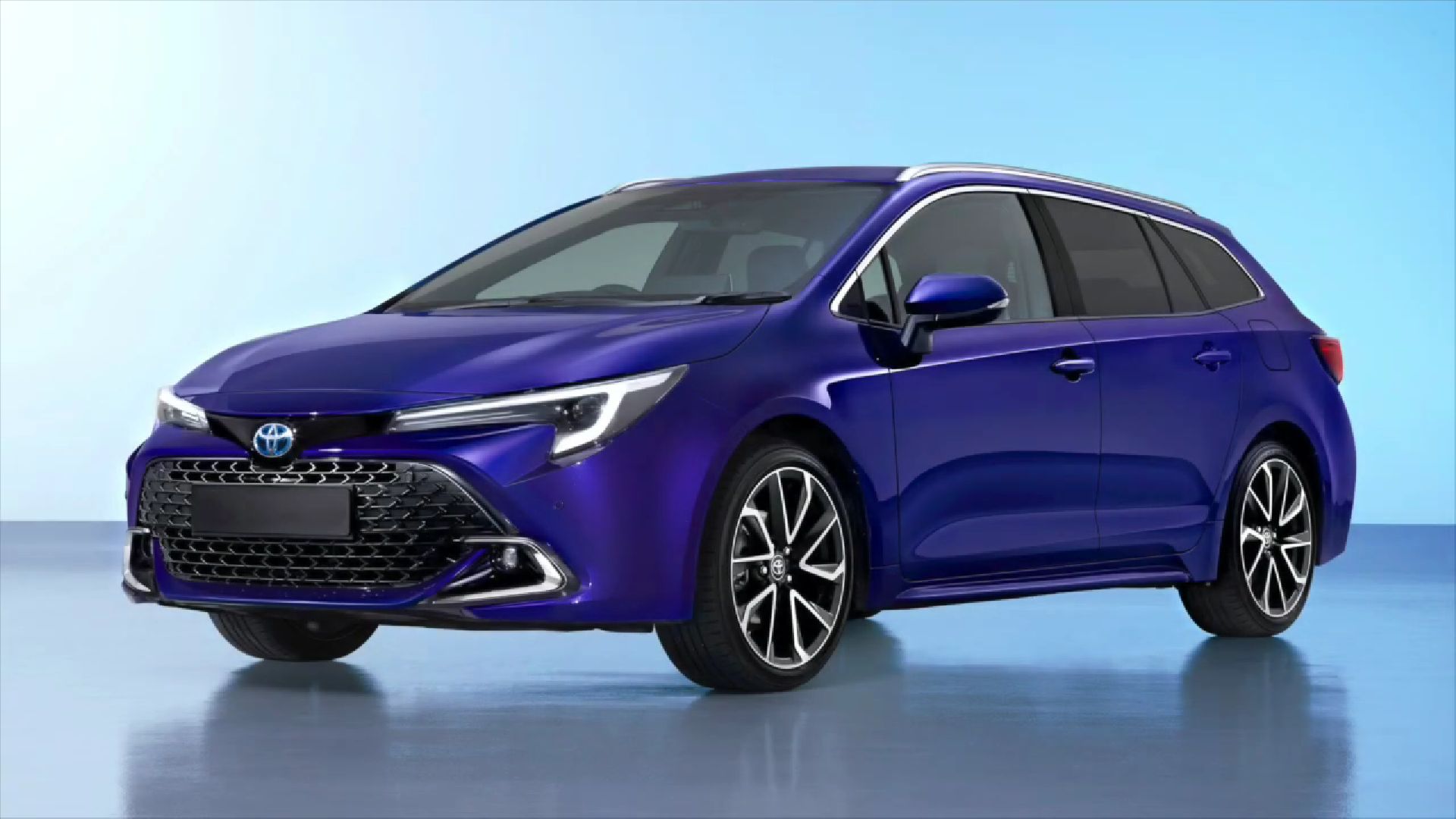
1. Toyota Corolla Wagon
The Toyota Corolla Wagon has long been a staple in global markets where small, efficient, and affordable transportation is paramount. It’s a vehicle built for function, not flair.
Under the hood, the engine is usually a modest 1.8-liter or 2.0-liter four-cylinder paired with a CVT transmission that prioritizes fuel economy over any semblance of performance.
Acceleration is sluggish, the steering feels numb, and the driving dynamics are soft and unremarkable. This wouldn’t be a major issue if the car offered any engaging qualities elsewhere, but it doesn’t.
It gets the job done and nothing more. In a world where many crossovers are at least trying to look or feel sporty, the Corolla Wagon doesn’t even attempt to pretend.
Interior design in the Corolla Wagon is equally utilitarian. Hard plastics dominate the cabin, and while everything is laid out logically, there’s no sense of flair or excitement.
The seats are designed for comfort over long drives but offer little lateral support, and the infotainment system, while functional, lacks the responsiveness or visual appeal of its rivals.
Sound insulation is minimal, road noise is intrusive at highway speeds, and no driving mode will make it feel even remotely dynamic.
You sit low, visibility is average, and there’s none of the commanding presence or sense of safety that many compact crossovers convey. It’s almost as if the vehicle was designed purely as an appliance.
What’s most damning for the Corolla Wagon is the simple fact that its crossover sibling—the Toyota Corolla Cross—offers a more appealing package in almost every area. The Corolla Cross sits higher, giving it better visibility and a more commanding road presence.
It offers slightly more space, a similar fuel economy figure, and just enough crossover-esque ruggedness to make it feel more adaptable to different lifestyles.
Compared to that, the Corolla Wagon seems outdated, uninspiring, and largely irrelevant in today’s market. It’s the kind of car that you end up with, not one you aspire to own.

2. Ford Focus Wagon (Non-ST Versions)
The Ford Focus Wagon, particularly in its non-ST variants, represents the automotive definition of middle-of-the-road. It’s built on a competent compact platform, and while it doesn’t do anything particularly wrong, it also doesn’t do anything particularly memorable.
The base engine offerings are typically a naturally aspirated or small turbocharged four-cylinder, neither of which are known for refinement or character.
The driving experience is acceptable but forgettable—steering is light, body control is average, and there’s little in the way of throttle response or chassis feedback. This wagon was designed for cost efficiency and practicality, not driver involvement or fun.
The interior of the non-ST Focus Wagon is one of its weakest links when compared to crossovers in the same price bracket. Materials are mostly soft-touch plastics, and while the layout is functional, it’s not particularly stylish or comfortable.
The seats are basic, lacking bolstering and comfort on longer drives. In terms of technology, earlier models lacked the advanced infotainment and driver assistance features that became standard in crossovers like the Ford Escape or EcoSport.
The sound system is barely serviceable, and there’s little insulation to keep out road and engine noise. Everything about the cabin says “economy,” with very little effort made to give it any aspirational feel.
More importantly, Ford’s own lineup essentially made the Focus Wagon redundant. Buyers flocked to the Escape and later the EcoSport not just for their elevated ride height but because they offered more personality, better visibility, and a greater sense of purpose.
Crossovers like the Escape brought a fresher design, more versatile cargo options, and comparable fuel efficiency, all while sitting higher and feeling more secure on the road.
The Focus Wagon, by contrast, felt like a safe but uninspired choice—something you’d pick off the lot because you didn’t have a strong opinion. It lacked the spirit that once made small wagons cool, and it didn’t evolve fast enough to remain relevant.

3. Volkswagen Passat Wagon
Volkswagen’s Passat Wagon has historically ridden the line between premium and mainstream, especially in the European market. But in recent generations, particularly the latter half of the 2010s, it began to lose its identity.
The Passat Wagon became increasingly bland—its once-crisp styling softened, its driving dynamics dulled, and its interior stripped of the upscale flair that once set it apart.
The engines, mostly turbocharged four-cylinders with modest outputs, were tuned more for smoothness and efficiency than excitement. The suspension, while comfortable on highways, felt floaty and uninvolving on twisty roads.
Compared to sharper crossovers or even Volkswagen’s own SUVs like the Tiguan, the Passat Wagon felt like a relic from a more conservative era.
The interior design didn’t help matters. Earlier Passats had cabins that flirted with Audi-like refinement, but recent iterations veered too far into cost-saving territory.
Hard plastics crept into more areas, the infotainment system became dated compared to newer VW offerings, and the ergonomics suffered from awkward control placement and aging interfaces.
The cabin was spacious, yes, but space alone doesn’t sell cars anymore. Today’s drivers expect a blend of comfort, style, and interactivity—and the Passat Wagon simply couldn’t deliver. It became a car you chose out of necessity, perhaps for its size or familiarity, but not for any emotional reason.
Meanwhile, crossovers—even ones in the same showroom—offered better value propositions. The Volkswagen Tiguan, for example, boasted more modern styling, an elevated driving position, and comparable efficiency, all while offering similar (or better) tech and more engaging design language.
The rise of crossovers underscored just how stagnant the Passat Wagon had become. Where crossovers evolved to meet changing consumer tastes, the Passat Wagon stagnated. It remained an honest and practical car, but one that lacked charisma or a clear identity—something no modern vehicle can afford to do and still expect to thrive.
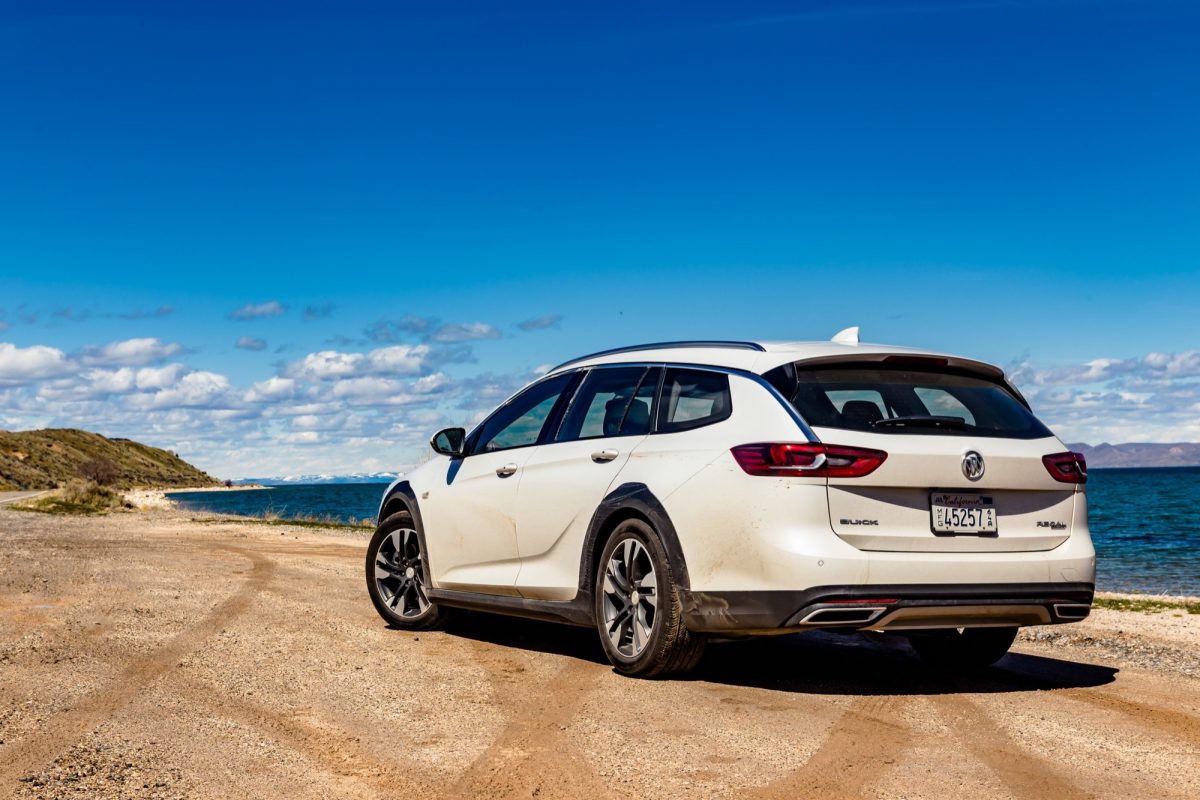
4. Buick Regal TourX
The Buick Regal TourX was an intriguing concept on paper—an American brand selling a sleek, European-style wagon with standard all-wheel drive and ruggedized cladding meant to appeal to soft-road adventurers. But the execution fell flat.
Powered by a 2.0-liter turbocharged engine making around 250 horsepower, the TourX was decently quick in a straight line but lacked the dynamic finesse expected in a wagon competing with the Subaru Outback and Audi Allroad.
The handling was uninspiring, the steering overly light and detached, and the suspension too soft to feel sporty yet not plush enough to feel luxurious. It fell into a no-man ’ no-man’s-land of mediocrity, unable to carve a niche.
Inside, the TourX was equally underwhelming. Buick made a half-hearted attempt at premium materials, but the interior felt more like an upgraded Chevrolet than a true luxury product.
Plastics dominated, and the design lacked cohesion or personality. The infotainment system was functional but not outstanding, and there was little in the way of upscale touches.
Space was abundant—one of the TourX’s only real strengths—but buyers who prioritize space already had other, more compelling crossover options to consider. Without a true luxury feel or any real off-road prowess, the TourX ended up being more show than substance.
Worse still, the TourX suffered from a lack of brand clarity. Buick wasn’t exactly top-of-mind for younger buyers or wagon enthusiasts, and longtime customers were confused by the shift from sedans to this more niche offering.
Meanwhile, the Subaru Outback—its closest competitor—offered better real-world capability, stronger resale value, and a loyal customer base.
The Audi Allroad and Volvo V60 Cross Country catered to the luxury wagon crowd far more convincingly. Ultimately, the TourX failed to capture anyone’s imagination.
It was a wagon that looked adventurous but drove like a rental car, making most crossovers, regardless of size or price, feel like more inspired purchases.
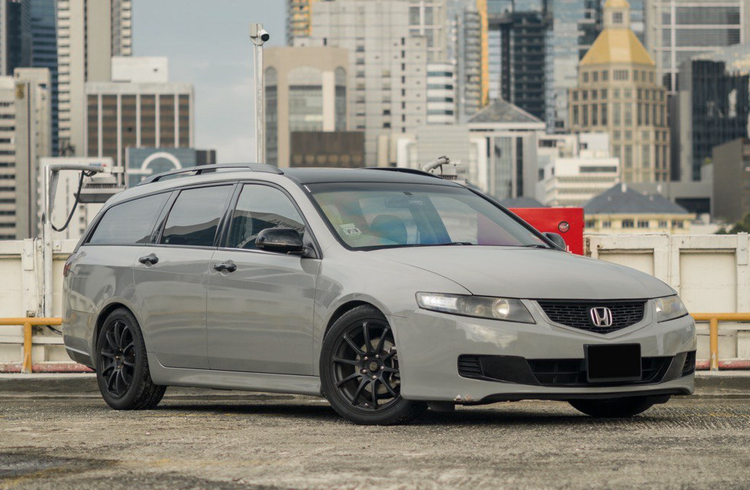
5. Honda Accord Wagon (Old Models)
The Honda Accord Wagon, last seen in the early 2000s in the U.S., was a vehicle that left almost no lasting impact despite being based on one of the best-selling sedans in history.
While it shared the Accord’s legendary reliability and roomy interior, the wagon variant offered little in the way of added excitement or uniqueness.
The engines, usually four-cylinders or mild V6s, were tuned for smoothness rather than speed, and the handling was deliberately soft to appeal to the broadest possible audience.
The result was a comfortable car, yes—but dull to drive, with vague steering, minimal feedback, and a general lack of road feel that sapped any enjoyment from spirited driving.
The design was similarly uninspired. From a distance, the Accord Wagon looked like a stretched sedan with a longer roofline—and up close, that impression didn’t improve much. It lacked the purposeful stance of a true wagon and the visual flair to make it stand out.
The interior, while ergonomic and spacious, was filled with grey plastics and straightforward, uninspiring design. There were few, if any, elements that made it feel special or tailored to a wagon buyer’s specific needs.
It was the kind of car built to haul kids and groceries, not to engage the driver or turn heads at a car meet.
Contrast that with today’s Honda CR-V, which offers more cargo space, a higher seating position, a hybrid option, and a full suite of active safety features. Even the base CR-V provides a better driving experience and a more modern design inside and out.
While the Accord Wagon might have made sense two decades ago, today it feels like an evolutionary dead-end.
In the current automotive landscape, where even family cars are expected to show some spark, the Accord Wagon’s beige mediocrity serves as a reminder that practicality alone isn’t enough to win buyers anymore.
Also Read: 10 Cars With the Easiest Child Seat Anchor Access
The Long Roof Divide: When Function Meets Passion (Or Doesn’t)
As we step back and look at the full picture, it becomes clear that wagons occupy one of the most polarizing spaces in the modern car landscape.
On one end, they offer a compelling alternative to crossovers: lower centers of gravity, more engaging handling, sleeker aesthetics, and a kind of enthusiast pedigree that many SUVs can only dream of.
The best wagons—the Audi RS6 Avant, Mercedes-AMG E63 S, and even the surprisingly sporty WRX Wagon—represent a refined balance of power, practicality, and driving joy.
They prove that you don’t have to choose between speed and space or compromise comfort for fun. These vehicles aren’t just wagons—they’re statements of identity for people who refuse to follow the herd.
But this duality is what makes wagons so divisive. Because just as some push the boundaries of what a long-roof vehicle can be, others play it painfully safe.
The Toyota Corolla Wagon, Ford Focus Wagon, and outdated Honda Accord Wagon are prime examples of when the format stagnates.
They are vehicles that go through the motions, offering basic transportation with minimal excitement or vision. And that’s the danger of the wagon segment: when done without intent or ambition, it becomes redundant.
Why choose a boring wagon over a slightly taller, more versatile crossover that offers the same efficiency and more cargo utility? The answer is: you don’t—and most buyers don’t either.
This is why many carmakers have abandoned the segment altogether. It’s easier to market a crossover as aspirational than a wagon, no matter how much logic the latter might carry. And yet, there’s something deeply appealing about a car that dares to go against the current, especially when it does so brilliantly.
The best wagons serve the same purpose as crossovers but with more personality, better road manners, and often, more power.
They’re machines for those who care not only about what their car can carry, but how it carries them. They’re the connoisseur’s choice—discreet, fast, often underappreciated, but thoroughly rewarding.
So, what’s the takeaway? Simple: wagons aren’t inherently better than crossovers, nor are they inherently worse. Like any class of vehicles, their value depends entirely on execution.
When automakers invest the same passion into a wagon as they would a halo sports car or an upscale SUV, the result can be magic.
But when they churn out uninspired shells in an effort to hit fuel economy targets or simply extend a model line, the result is mediocrity on wheels.
The lesson here is that form factor means little without intent, and the wagons that truly shine are the ones built with a purpose, not just a price point.
In a world oversaturated with crossovers, wagons—both good and bad—offer a mirror to the automotive industry’s priorities. They show us what happens when utility is fused with joy, and what happens when it isn’t.
And for the drivers who still love to feel the road, wagons may just remain the automotive world’s best-kept secret.
